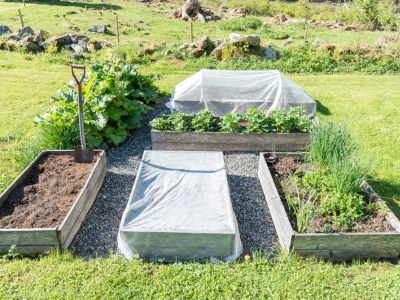Why Turn Raised Bed into Cold Frames
A cold frame uses insulation and radiation from the sun to create a warmer climate in the garden. This allows you to grow plants earlier in the spring, start seeds outside earlier, and grow longer in the fall or winter. How much you can extend the growing season depends on your climate and zone, and also on the insulating properties of the cold frame. Even if you only get an extra month of growing time, a cold frame can give you additional harvests. Using a raised bed to make a cold frame is an efficient and easy way to get seasonal extension. You could start from scratch building a cold frame, but if you have raised beds, all you really need to do is put a transparent cover on it.
How to Build a Cold Frame over a Raised Bed
A DIY cold frame raised bed is easy to make with the right materials. You can use plastic sheeting, acrylic, or glass. Use found materials and objects or construct a lid with new lumber. If you make your own wood frame with glass or acrylic, add hinges on one side. This allows you easier access to the bed. It will open like a door. You can then remove the hinges in the spring and convert it back to an open raised bed. Here are some ideas for simple cold frame covers for raised beds:
Find salvaged windows in their frames. Set these over your raised bed to trap heat and let in light. You can make the same simple structure using acrylic panels or even plastic sheets weighed down with stones around the edges of the bed. Create a tent over your raised bed using salvaged wood and a plastic sheet. Build a plastic sheet tunnel over the bed with concrete rebar mesh. Farmers use caterpillar tunnels as movable green houses. You can use one of these if you have a large bed or look for a small caterpillar that fits over your beds.
Keep in mind that the temperature inside a cold frame can actually get too hot on sunny and warmer days. You may need to crack it open during the day and seal it up again at night if frost is likely.
